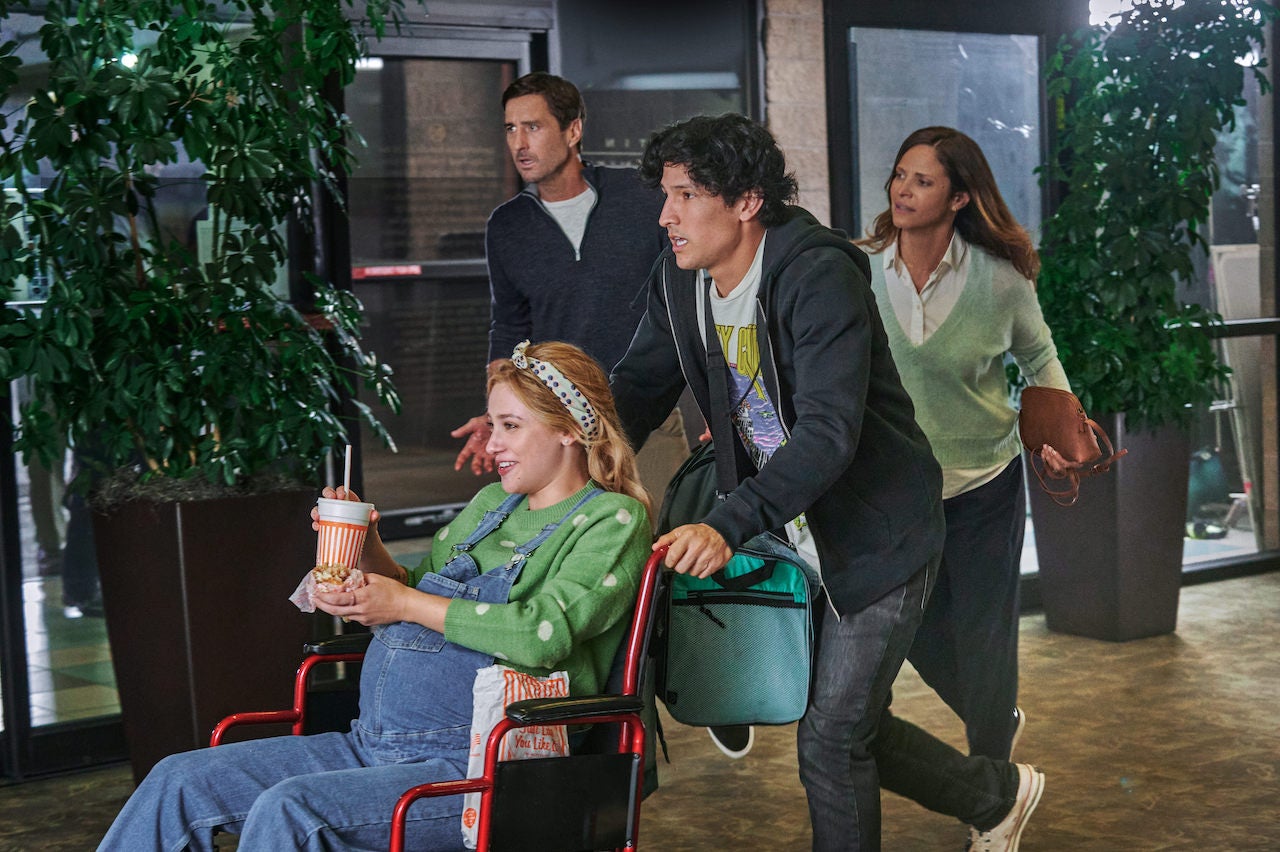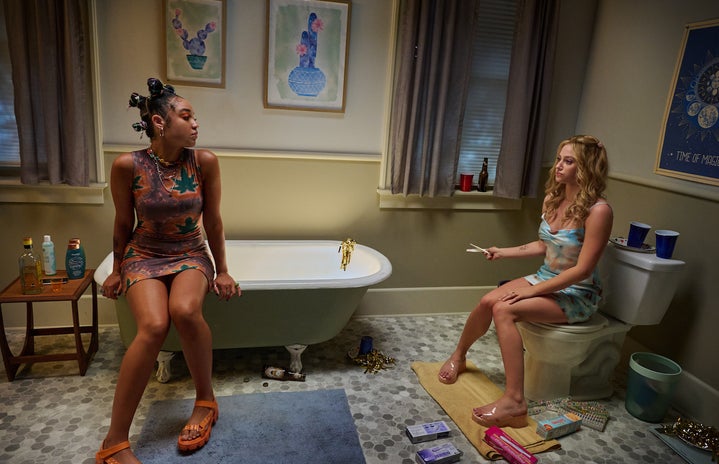The title of Netflix’s latest release, Look Both Ways starring Lili Reinhart, is inadvertently misleading.
The central premise of the film, which borrows from Sliding Doors, centers around two diverging timelines that split on the night of protagonist Natalie’s (Reinhart) college graduation, when she takes a pregnancy test after having sex with a friend, Gabe. In one timeline, Natalie finds out she’s pregnant, and moves back in with her parents to raise the baby. In the other, Natalie isn’t pregnant, and continues with her “five-year plan” to move to LA with her best friend Cara and work at an animation studio.
However, the title of Look Both Ways is directed more at us, the audience, than Natalie herself. We see the paths her life could take depending on whether or not she has a child, but for her, those futures are presented as out of her control, rendering her a passive character in her own life. Natalie doesn’t even get a choice as to whether or not she wants to be a mother; instead, after Gabe tells her he will support her choice on what to do about the pregnancy, Natalie tells Cara she’s going to have the baby because “it just feels like something that I have to do, like this was supposed to happen.”
Look Both Ways wants us to believe that Natalie’s choice to have the baby is inevitable in some way. The audience gets no context as to why she might’ve accepted this fate — there’s no religious or personal reason explained. In fact, we’re given very little information about her character at all, except that she’s had a five-year plan that she plans on sticking to no matter what… only to push it aside in a seemingly uncharacteristic moment.
In hinging the central conflict on Natalie having the baby because she “felt like she had to,” Look Both Ways seems to argue despite its intentions that our lives are products of circumstance, not of choice — and for women, that decisions about their bodies and their futures are largely made for them rather than by them. And while, with the recent overturning of Roe v. Wade, it certainly is the case that women’s futures are being chosen for them, it is not in the same way that the movie suggests.
The movie is trying to convince us that everything will end up okay in both timelines. Natalie makes it as an animator, and falls in love with a guy who’s perfect for her (a different one for each universe). It’s a feel-good story fit for a post-Roe America, in which the anti-abortion movement wants you to believe that pregnancies equal parenthood, because the choice is made for you — and to you and your baby’s benefit, ostensibly.
But the reality of having a baby at 22 often isn’t as smooth a process as it is for Natalie — she and Rosie get to stay with her parents free of charge, her co-parent Gabe is supportive and present at all times, and she seems to be parenting without needing a job for most of the film. Even when her parents press her and Gabe about money when they break the news of the pregnancy, it gets glossed over, and money is never brought up again. The film joins countless other Hollywood movies and shows that romanticize young motherhood, often for well-off white girls specifically.

Production for Look Both Ways took place in the summer of 2021, starting about a year before the overturning of Roe v. Wade led to trigger bans outlawing abortion in most cases in Texas, the film’s main setting. Even so, abortion rights have been hotly debated for years, and for a film that delves so deeply into the consequences of pregnancy to gloss over abortion entirely seems misguided — and privileged, as Natalie has financial resources that many young mothers (especially Black mothers) do not. The film seems less concerned with the real consequences of parenthood, beyond one dirty diaper, and more concerned with wrapping things up in a neat little bow.
If the movie had had Natalie become pregnant in both timelines and then decide for herself what’s most important to her, we could’ve seen her in the driver’s seat of her own future. Instead, the movie barely seems to pause at the moment of Natalie’s pregnancy test, and her own thoughts and feelings about it are bulldozed over for the universe’s paths for her.
At a time when more Gen Z’ers are scared about losing their reproductive rights than ever, framing parenthood as a stop on the way that will still land you in the same spot is misguided and even dangerous. Look Both Ways could’ve been provocative, exciting, and surprising, had it leaned into Natalie’s agency over her own body and given her a choice to make by including the pregnancy in both timelines. Instead, she is just as much in the passenger seat of her own life as we are, and it’s unclear who’s meant to be driving this car.


